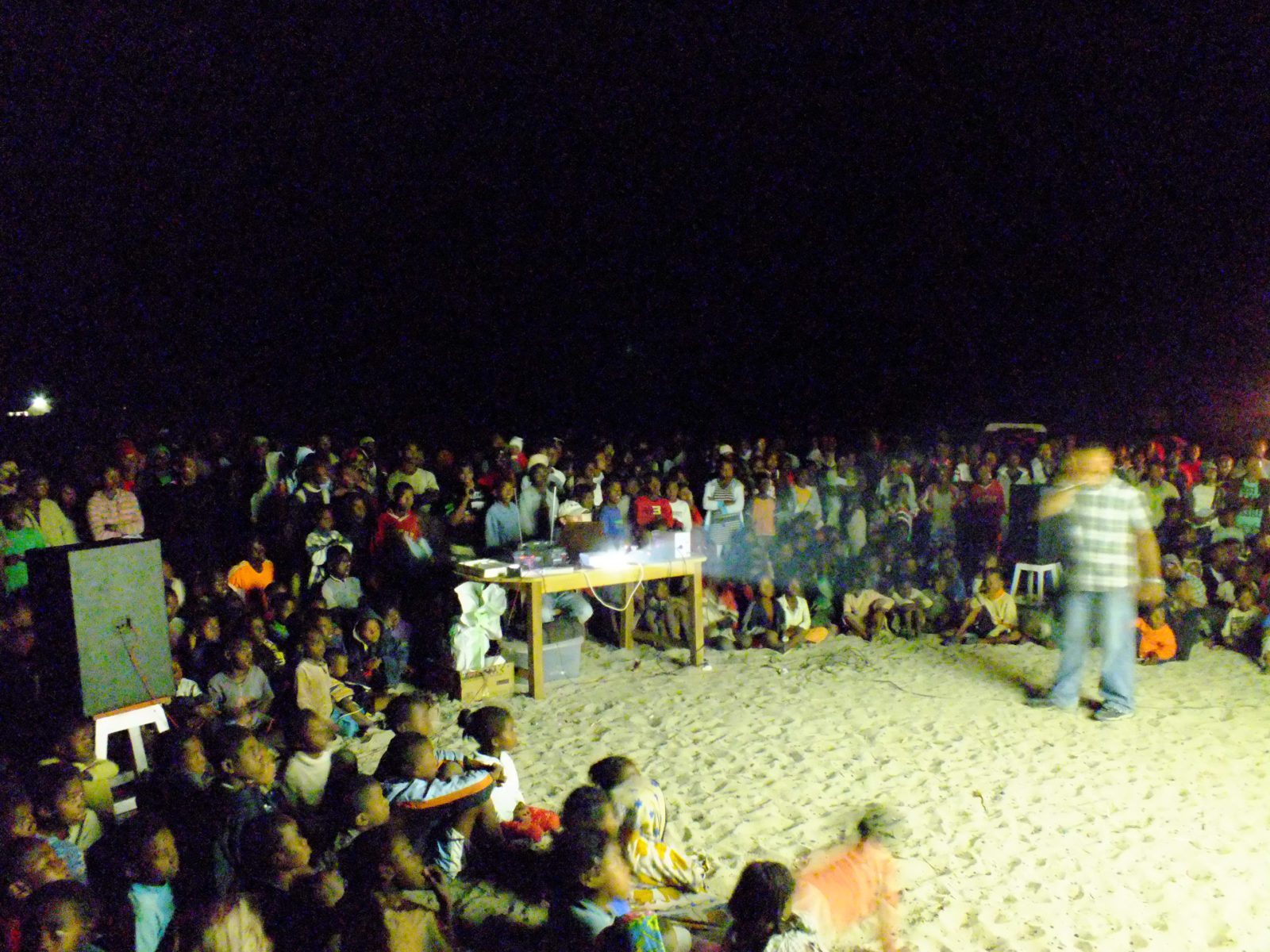By Brian Jones, Conservation Project Coordinator, Belo sur mer, Madagascar
In social marketing terminology it’s referred to as an “aperture” – a point in time when you have your target audience’s undivided attention, and your message will be most effective, soaked up like a sponge; the 20-minute metro commute in the morning, the 15-minute wait in the lobby of the doctor’s office, or a 30-second spot during half-time at the Super Bowl. In a world of ever increasing stimuli, it is these rare moments of target audience captivity that make the salivary glands of both social and commercial marketers alike jump into action. Thousands of dollars are spent in market research to identify these precious chunks of time, and millions are spent to exploit them.
So here I sit, in front of the glow of my laptop computer, amber twilight fading to purple, finally to black. Anyone who’s spent time in the countryside in this part of the world knows how quickly the darkness of night engulfs your surroundings and puts a lively village to sleep, as if by the snap of a hypnotist’s fingers.
Not this night however.
My laptop’s hooked to two box speakers which belch out the unmistakable beat of the rump-shaking kilalaky music that the Menabe region of western Madagascar is renowned for. The white background of our PowerPoint presentation mirrors back off the 10m x 10m canvas sail we’ve rigged up in the middle of this fishing village as a makeshift projector screen, and illuminates the awe-struck faces of the people of Ankevo sur Mer, a tiny Vezo fishing village located 40 km south of the regional capital Morondava.
I steal a glance behind me to see what the turnout’s like… everyone’s here.
The older men sit off to the east, older women to the west, young guys/girls in the middle, half the children have their jaws agape, the other half kicking up a sand/dust cloud by dancing furiously in the light of our makeshift movie screen. All are wondering the same thing – “What’s this?”

I kill the music, and the children plop down in the cool sand.
Complete, expectant silence.
All eyes are on Thomas, former shark fishermen turned conservationist and PADI divemaster, microphone in hand, standing in the glare of the projector which now constitutes the only man-made source of light in a 20 km radius.
Forget about researching daily routines to find the appropriate “aperture” for our messages of community-based resource management: we’ve just created our own!
A natural performer, Thomas is in his element, not missing a beat. He dives into an explanation of the fishery monitoring we’ve been conducting in this village; Why do we do it? What do we hope to learn? How can it help us manage our resources? All in the rapid-fire guttural hiccup of the Vezo dialect, which, to the untrained ear, can be mistaken for a heated verbal confrontation.
Rewind a couple of months to a picture of a dejected me, half-heartedly poking at a plate of rice and boiled fish in this same village. We had just held a meeting in the village’s primary school. Twenty sets of glazed over eyes, slightly annoyed as our meeting had roused them from their afternoon naps. We fruitlessly tried to explain our work with scribbles on a chalkboard and pictures in the sand. Nothing is sinking in, nothing will be taken home. A mere 150 km south of here, in the villages of Velondriake, we are spearheading internationally acclaimed work in community-based natural resource management, and now we’ve come here to replicate it, but the message is not getting across.
There has to be a better way.
NGO workers like myself tend to romanticise these traditional village meetings – all of the town elders sitting in a circle in the shade of a monstrous tamarind tree, discussing, debating, reflecting – the perfect forum, one would think, for important decision-making and grassroots initiatives. Unfortunately, these traditional village meetings are becoming less important, an unintentional product of the plethora of previous conservation and development projects that have failed to deliver. People are tired… Another meeting? Leave it, probably not important anyway.
Our presentation of fisheries monitoring is over, and Thomas has settled down into his chair. The voice of independent filmmaker Jon Slayer drifts over the still captive audience, peppered with Thomas’ Vezo interpretation, as this tiny village in western Madagascar stares at larger than life images of massive shoals of sweetlips, a two-meter long guitarfish, and various other scenes of aquatic life, all shot on location in and around Andavadoaka in the Western Indian Ocean’s largest locally managed marine area. The audience’s silence is broken occasionally with gasps of excitement, the screaming out of names of familiar fish, and the “ah-ha’s!” of gaps in traditional ecological knowledge being filled in by the wonders of western videography.
It’s now been two hours that we’ve had the undivided attention of this entire village. Think of the potential. Why explain the science that tells us that marine reserves probably fill up with fish in a few years when we can show real footage of the massive schools of surgeonfish in the two year old permanent reserve near Andavadoaka. Instead of telling the story of how villagers in Velondriake have taken the lead in managing their resources, we can show interviews with actual members of the Velondriake community, describing their experiences.
Regardless of the subject, most importantly we’ve learned that with a couple of speakers, a big white sail and two litres of petrol, we can deliver our messages in a way that people will actually pay attention to. The possibilities are endless.

